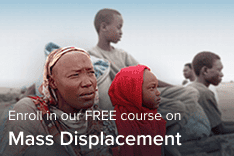I often think about Mweni—the quiet three-year-old child of Ruth who was dying of AIDS when I first met her in Kenya in 1993. Thinking the exposure to a dying parent would be too difficult for Mweni, her aunties usually kept her away. But Ruth begged her to come every day to see her and tell her about her day. Then she would pray for her. I wonder how Ruth’s prayers were answered? What was Mweni’s orphaned life like? Did she finish school? Did she avoid HIV herself? Is she now married and raising a family? I do believe that somewhere tucked in her bundles of belongings is the treasured memory box of photos, letters, prayers, and small items Ruth left for Mweni to remember her by.
Nearly 20 years have passed since Ruth died of AIDS. This month 25,000 people will gather in Washington DC to attend the 2012 International AIDS Conference. Many US and world leaders will stir us to press on to “turning the tide together”—the theme of the conference. What is this tide, and what does it take to turn it together?
The AIDS crisis of the 1990s is still a crisis today. According to UNAIDS, nearly 34 million people are living with the virus, HIV, and 30 million have already died. We have effective medications today that have turned the tide of this illness from snatching a life prematurely to making AIDS a chronic illness, but only eight million people access this medicine-for-life. We don’t seem to win. For every new person treated with these life-saving drugs, two persons are newly infected. How do we change this rip tide that threatens to push us back to sea after so many years of hard-earned progress?
Actually, we know all we need to know, to change the course of this tide. And working together, the tide can be turned. A surprising source demonstrates how. Here are some lessons God’s people, committed to His body, the church, are applying so that Mweni’s children will not be part of another lost generation.
1. We, the church, are vulnerable.
For good reason, good public health targets vulnerable populations with specific, proven interventions to address communicable health concerns. Though many of us continue to point fingers at high risk populations such as men who have sex with men or drug addicts, the facts are that we all are vulnerable to sexual situations fueling this epidemic unless our hearts, minds, and bodies are constantly guarded and our environments made accountable to one another. Recognizing this changes everything, including one of the most lingering barriers to changing the tide—stigma. Honesty leaves little room for pride and finger-pointing.
2. We, the church, can change—ourselves and our cultures.
The mobilized church has overcome self-righteous attitudes and actions and protected life, cared for the dying, and persevered to advocate for the voiceless child or battered woman. Widespread, unfounded fear of people with AIDS has been changed to embracing people living with AIDS. A young Khmer girl in Cambodia attending an all-girl group on empowering girls to make wise sexual choices was asked about the kind of man she wanted to marry. Without hesitation she blurted out, “A man who will be faithful to me all my life.”
3. We, the global church, are equipped to continue.
The international AIDS conference will make appeal after appeal for more funds, resources, research, and commitment. The church leads the global pack in sustainable and renewable interventions with resources that will never dry up—passion for the poor, shared households and physical goods, the truth and knowledge of God for everyday living, and the experience of forgiveness, healing, peace, and unconditional love.
The work of World Relief through partner global churches is turning the tide together with many millions of global players in the sea of HIV and AIDS. As pills to protect and sustain life are dispensed by ministries of health, the church is extending skills to change behaviors promoting wise choices regarding sexuality and marriage. As the Global Fund for HIV, AIDS, and TB seeks funds for coffers to prevent and care for persons with AIDS, the church opens its vast volunteer base to provide home care. As rock stars like Bono lend their influence to advocate for millions of orphans and youth affected by AIDS, peer youth educators in grass-thatched churches use music and games to build life skills that encourage delaying sex until marriage.
Why not join us this very week, in committing your support to stem the tide and save Mweni’s generation? We invite you to peer into the lives of church and World Relief volunteers in Haiti, Sudan, Kenya, Congo, Rwanda, Burundi, Malawi, Mozambique, India, Cambodia, and Papua, Indonesia. Learn how they were equipped to address the stigma and fear of HIV in their countries and how today they are changing the face of the epidemic in their country—one precious life at a time, for all time.
Debbie Dortzbach is the Senior Health Advisor at World Relief, based in Baltimore, MD and author of “The AIDS Crisis: What We Can Do” with W. Meredith Long.
Photos by Marianne Bach and Benjamin Edwards


